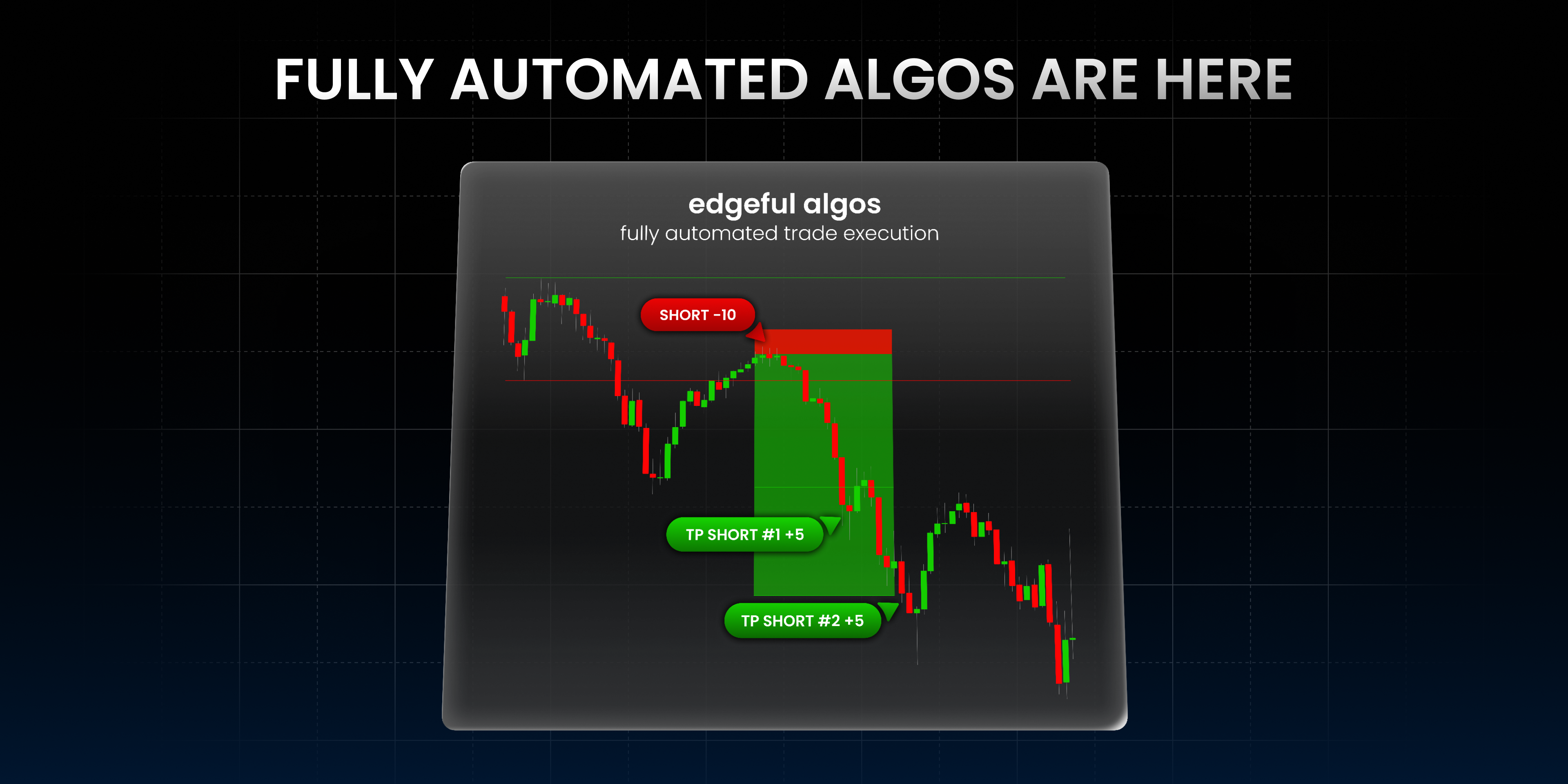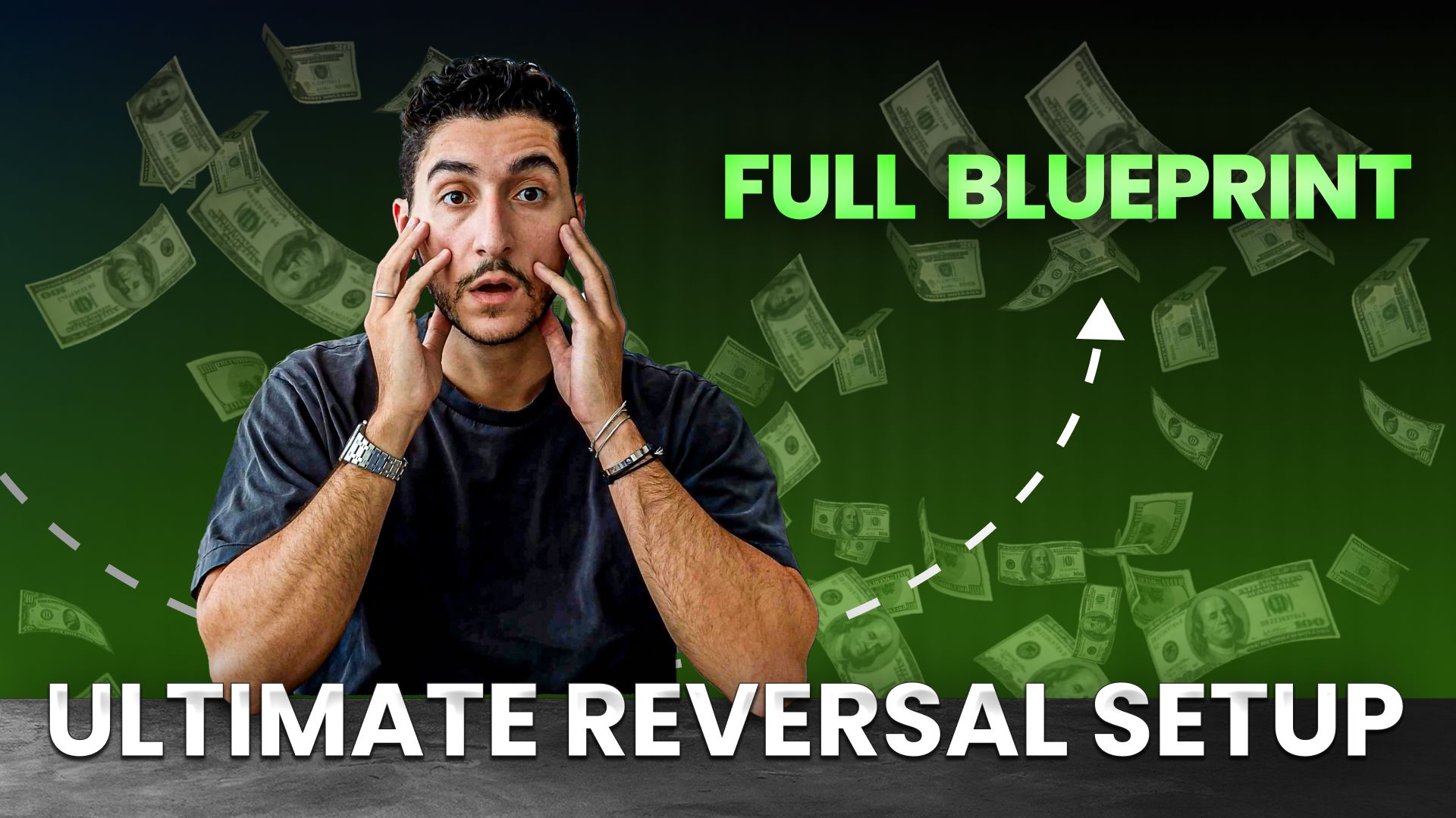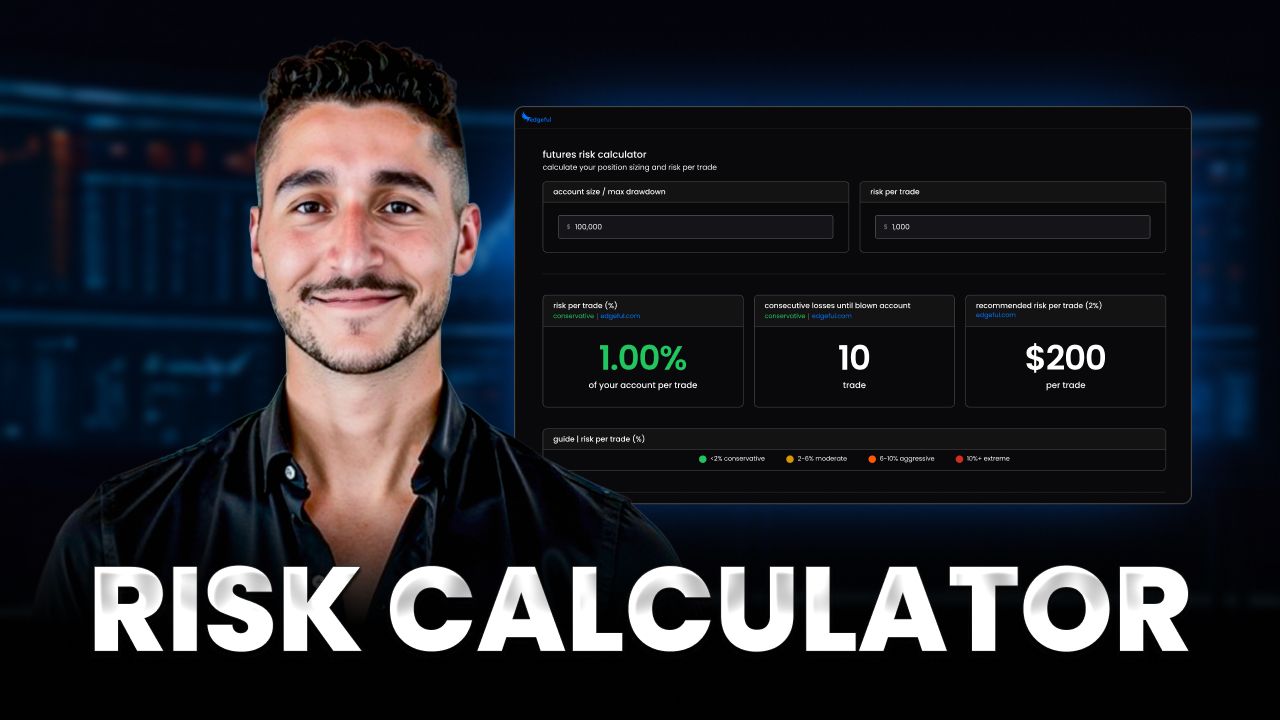automated trading strategies: the complete guide to data-driven algo trading in 2025

most traders still manually execute every single trade, letting emotions sabotage their results. but automated trading strategies are changing everything — removing human psychology from the equation and executing trades based on pure data.
after 18 months of testing automated trading strategies with live money, and using edgeful's data to create 4 different algos, I'm sharing everything you need to know about building and implementing automated trading strategies that actually work in today's markets.
here's a quick look at how the ORB strategy has performed this year, on a 10,000 account trading 1 NQ contract:

table of contents
- what are automated trading strategies
- why manual trading fails most traders
- the data behind successful automation
- types of automated trading strategies
- how to build your first automated strategy
- broker integration and execution
- risk management for automated systems
- common mistakes and how to avoid them
- frequently asked questions
- key takeaways
what are automated trading strategies
automated trading strategies are systematic approaches that use computer algorithms to execute trades without human intervention. instead of manually watching charts and clicking buy/sell buttons, these systems automatically enter and exit positions based on predefined rules and market conditions.
the key difference between automated strategies and manual trading is consistency. humans get emotional, second-guess themselves, and deviate from their plans.
algorithms don't.
they follow the exact same rules every single time, regardless of whether the last trade was a winner or loser.
core components of automated trading systems
every effective automated trading strategy consists of three essential elements:
- entry criteria (where do I enter and how much do I buy)
- exit criteria (where do I exit and how much do I sell)
- risk management (position sizing, drawdown)
why manual trading fails most traders
after working with thousands of traders, I've identified the recurring patterns that destroy discretionary traders.
emotional trading
the biggest killer of trading performance isn't market volatility — it's human psychology. this is exactly why automated trading strategies are so effective. traders consistently make the same emotional mistakes:
- taking profits too early when trades move in their favor
- holding losers too long hoping they'll turn around
- revenge trading after a string of losses
- increasing position sizes after wins (overconfidence)
- decreasing position sizes after losses (fear)
automated trading strategies eliminate these emotional decisions entirely. the system follows the same rules whether the last trade was a winner or loser.
inconsistent execution
manual traders rarely stick to their original plan. they modify their strategy mid-trade, skip setups that "don't feel right," or add positions that weren't part of the original plan.
automated trading strategies solve this consistency problem by executing the exact same rules every time, regardless of recent performance or market conditions.
time and attention limitations
if you're like most people, you work a day job. or you have a family. or you're simply just busy throughout the day — and this business can result in missed entry, exit, and take profit signals.
when you create automated trading strategies, you're solving this problem completely. these algos wait for the signals to trigger, and then execute themselves (once you set them up).
you literally won't ever miss a trade again.
the data behind successful automation
our testing over 18 months with live money provides concrete evidence for automation's effectiveness. these aren't backtested results — this is real money, real slippage, and real market conditions.
ORB algorithm performance on NQ
January 1 - July 31, 2025 results:
- total P&L: +$17,485 (+174.85%)
- total trades: 64
- profitable trades: 73.44%
- profit factor: 2.086
- max drawdown: 18.68%
- average trade duration: 4.2 hours
I referenced this at the beginning of the blog. here's the equity curve image again for you:

consistency metrics that matter
the most important benefit of automated trading strategies isn't just the returns — it's the consistency. manual traders typically see wild swings in their equity curves. automated trading strategies show much smoother performance patterns.
this isn't entirely normal — but our ORB strategy has only lost consecutive times twice throughout the year.
- maximum consecutive losses: 2
- recovery time after max drawdown: 8 trading days
volume and execution advantages
automated trading strategies capture opportunities that manual traders miss. during high-volatility periods like FOMC announcements, automated trading strategies provide significant advantages:
- execution speed: 1-2 seconds from signal to order
- no hesitation during volatile conditions
- consistent position sizing regardless of recent P&L
- ability to run multiple automated trading strategies simultaneously
types of automated trading strategies
successful automated trading strategies typically fall into several categories, each with distinct characteristics and optimal market conditions.
at edgeful, we've created 4 different strategies for you to optimize, and then implement.

- ORB algo
- Initial Balance algo
- Gap Fill algo
- Engulfing Candles algo (new!)
trend following strategies
these automated trading strategies identify and ride sustained price movements in one direction.
opening range breakout (ORB): trades breakouts from the first 15-60 minutes of the trading session. our data shows this strategy works particularly well on NQ in 2025.
initial balance (IB): similar to ORB but uses the first hour's range. particularly effective during trending market conditions with clear session bias, and our data shows ES has been particularly effective in 2025.
mean reversion strategies
these automated trading strategies profit from price returning to average levels after extreme moves. they work best in range-bound markets or during oversold/overbought conditions.
gap fill strategies: trade the tendency for overnight gaps to fill during regular trading hours. our gap fill data shows 67% fill rate for gaps between 0.25% and 1.5%.
how to build your first automated strategy
building effective automated trading strategies requires a systematic approach. we've done the hard work for you, so all you have to do is follow these steps:
step 1: identify the algo you want to trade
before automating anything, you need a strategy that actually works. this means:
backtest extensively: use at least 2 years of historical data to validate your approach. pay attention to maximum drawdown periods and consecutive losses.
define clear rules: every aspect of your strategy must be objective. "price looks strong" isn't a rule. "price breaks above the previous day's high by at least 0.1%" is a rule.
optimize for consistency: prefer strategies with 60-70% win rates over those with 90% win rates but occasional large losses. consistent strategies are easier to stick with psychologically.
step 2: optimize it
- use our reports, the TradingView backtester, and the videos I’ve recorded to dial in the settings
- make sure you would actually trade this strategy manually
- if you wouldn't trade it manually, don't automate it
step 3: connect your broker
- click "connect broker" in the automation section
- read and accept the terms of service (every word matters)
- log in to your broker account
- start with paper trading (this is required)
step 4: name your strategy
- name your strategy — be specific: "NQ ORB 5min 0.5R”
- connect it to your broker account
- enable the strategy — this makes it live
step 5: set up TradingView alerts
- copy the webhook URL from edgeful
- create the alert in TradingView with the exact message format
- make sure it's an open-ended alert so it doesn't expire
step 6: paper trade it for at least a week
never go live with automated trading strategies until you've tested them thoroughly in a paper trading environment:
- monitor execution: verify that orders are being placed correctly and at expected prices.
- validate performance: ensure paper trading results match your backtested expectations.
broker integration and execution
right now, our main supported broker integration is with Tradovate. you can also log into Tradovate if you have a NinjaTrader account using the same log in credentials.
and yes, you can connect your prop firm as long as they integrate with Tradovate/NinjaTrader and check their Terms of Service.
recommendation: do not use prop accounts with intraday drawdown (drawdown limits on unrealized gains).
execution considerations
- order types: most automated systems currently use market orders for immediate execution. limit orders are coming but not yet widely available.
- slippage factors: expect 1-3 ticks of slippage on futures during normal market conditions. this increases during high-volatility periods.
- latency requirements: execution delay should be under 2 seconds from signal generation to order placement. longer delays reduce strategy effectiveness.
risk management for automated systems
automated trading strategies can execute many more trades than manual approaches, making robust risk management even more critical.
position sizing mathematics
- fixed fractional: risk the same percentage of account value on every trade. if you risk 1% and your account is $10,000, risk $100 per trade.
- volatility-adjusted: adjust position size based on recent market volatility. increase size during low-volatility periods, decrease during high-volatility periods.
- correlation-adjusted: reduce position sizes when running multiple strategies that might trade similar setups.
drawdown management
- maximum account drawdown: set a threshold (typically 10-20%) where all automated trading stops until manual review.
- strategy-specific drawdown: individual strategies should have their own drawdown limits, typically 5-10% of account value.
- recovery protocols: define specific conditions for resuming trading after hitting drawdown limits.
monitoring and alerts
automated doesn't mean unsupervised. you need systems to monitor performance and alert you to problems:
- daily performance alerts: get notified of daily P&L, number of trades, and any unusual activity.
- system failure alerts: immediate notification if the trading system goes offline or stops responding.
- risk limit alerts: warnings when approaching position size limits, correlation limits, or drawdown thresholds.
common mistakes and how to avoid them
thousands of traders have shared their automated trading experiences with me. here are the most common mistakes and how to prevent them.
mistake #1: automating unoptimized strategies
- the problem: traders automate strategies they've never traded manually or that only work in backtests.
- the solution: manually trade your strategy for at least 30 trades before automation. if you wouldn't trade it manually, don't automate it.
mistake #2: over-optimization
- the problem: continuously tweaking parameters based on recent performance, destroying the strategy's statistical edge.
- the solution: set parameters based on long-term historical data and resist the urge to mess with them frequently. you want to review the parameters at least every month.
frequently asked questions
what's the minimum account size for automated trading strategies?
for futures trading with automated trading strategies, we recommend at least $10,000 to properly diversify across multiple strategies while maintaining appropriate position sizes. with smaller accounts, you're limited to single-contract positions which increases volatility.
how much time do automated trading strategies require?
once properly set up, automated trading strategies require 15-30 minutes daily for monitoring and review. initial setup and testing of automated trading strategies typically takes 2-4 weeks of part-time effort.
can automated trading strategies work during all market conditions?
no single automated trading strategy works in all conditions. successful automated trading typically involves multiple strategies designed for different market environments (trending vs ranging, high vs low volatility).
what happens if my internet connection fails during trading?
most broker platforms have built-in safeguards including automatic stop losses and position limits. however, you should have backup internet and procedures for manual intervention during system failures.
how do I know if my automated trading strategy is still working?
monitor key performance metrics weekly for your automated trading strategies: win rate, average trade duration, maximum consecutive losses, and profit factor. significant deviations from historical norms may indicate changing market conditions affecting your automated trading strategies.
are there any regulations around automated trading strategies?
retail automated trading strategies are generally unrestricted, but some prop firms have specific rules about automated trading strategies. always check your broker's or prop firm's automated trading policies before implementation.
key takeaways
look, automated trading strategies aren't magic. they're not going to turn you into a millionaire overnight, and anyone telling you otherwise is lying.
but here's what they will do...
- remove the biggest killer of trading performance: your emotions. after working with thousands of traders, I can tell you that 90% of trading failures come from psychological mistakes, not strategy flaws.
- deliver consistent execution: our live testing shows +$17,485 with a 73% win rate over 7 months on NQ. that's not backtested theory — that's real money, real slippage, real market conditions.
- eliminate the "what if" game: no more second-guessing entries, no more moving stop losses, no more taking profits too early because you got scared. the algo follows the same rules whether the last trade made $500 or lost $200.
- capture opportunities you'd miss: markets don't wait for you to finish your coffee or get back from lunch. automated trading strategies work while you sleep, while you're at work, or while you're busy with the family.
but you can't just flip a switch and expect to be immediately profitable. successful automation requires:
- a strategy that actually works (test it manually first)
- proper risk management (position sizing matters more than win rate)
- realistic expectations (drawdowns will happen)
- continuous monitoring (automated doesn't mean hands-off)
the combination of data-driven strategy development and automated execution isn't just the future of trading — it's happening right now. traders who embrace these approaches while maintaining proper risk management are positioning themselves for consistent long-term success.
the question isn't whether automated trading strategies work. our live results prove they do. the question is whether you're willing to put in the work to implement them correctly.
want the real data behind these strategies? our weekly newsletter breaks down actual trading performance, specific setups, and systematic approaches that work in today's markets. thousands of traders use our insights to build better automated trading strategies.
no hype, no promises of easy money — just data-driven insights that help you trade better.


